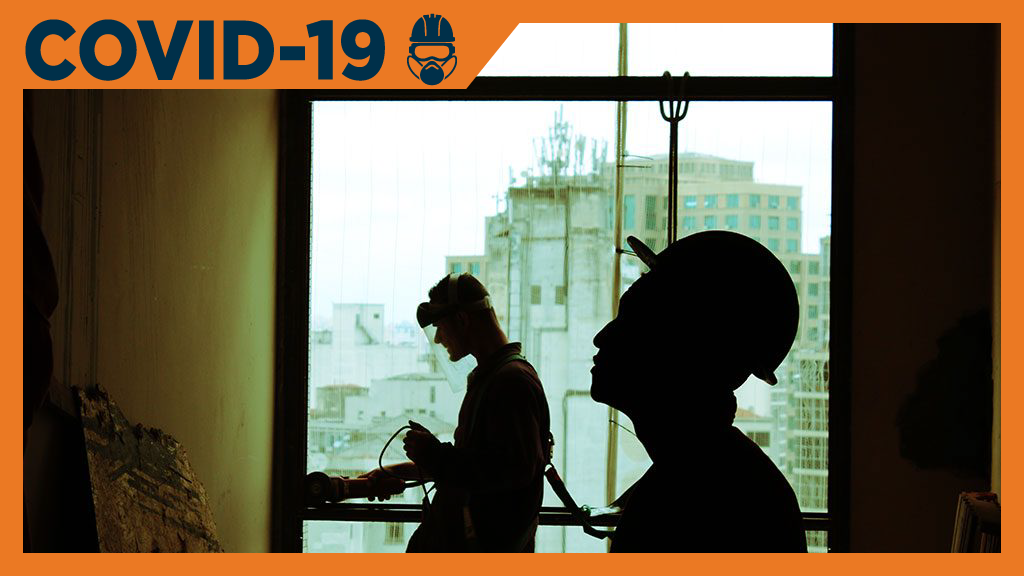The COVID-19 crisis is causing significant business disruptions in the construction industry and the Canadian Construction Association recently hosted a webinar on how to mitigate their impact from an operational and financial perspective.
“Projects are being delayed, there are supply chain issues, changing operation protocols, health and safety concerns, all those issues are at the top of our minds,” said Chetan Seghal, partner, Real Estate & Construction Advisory Practice, BDO Canada, during the CONnected webinar, COVID-19: Preparing for the future of construction, presented March 27.
Kyle Hume, vice-president, Strategy & Operations, BDO Canada, reviewed the elements of a strong business continuity plan and crisis management practices. Hume talked about four key pillars: deploy your crisis response team; conduct a business continuity risk assessment; communicate effectively; and plan for impact.
“The goal of any crisis response team is to implement a coordinated, timely and effective response to the crisis situation at hand,” said Hume. “Executive leaders must determine immediately what their key success factors are when working through this crisis and what those key success factors should look like when the pandemic is over.”
In addition to executives, the team should be made up of critical business roles and functions such as representatives from HR, IT, legal and communications.
“I can’t stress enough how important it is that everyone is on the same page and you need to ensure that you have all the right representation in the room to be making those decisions in a very effective way,” Hume said. “Once decisions are made at that executive level, you then need to determine who will be tactically executing and implementing the plan. You are trying to answer who is responsible for turning decisions into actions.”
“Communication is critical to any crisis response and it’s no different with COVID-19 especially how information is changing so fast and daily,” he added.
In terms of business continuity risk assessment, the goals are to identify potential internal business risks; validate your mission critical functions; validate your minimum service levels; and generate an action plan.
“This is really answering the question how do you continue to operate to the best of your capabilities given COVID-19,” said Hume.
“You will need to assess all aspects of your business to determine current or potential impact… When you conduct a business continuity risk assessment and you are at the final end of it, generate a plan and start with your core services and ensure you are generating a plan that allows you to continue moving forward.”
COVID-19 is also having a profound impact on operations.
“It’s important to plan how your workforce will be affected,” said Hume. “We are seeing a significant change in job scheduling from our clients ensuring there isn’t individuals crossing shifts to minimize the impact of COVID-19 cases among the workforce.”
Looking at supply chain and third-party risk, it’s critical to understand the availability of construction materials, Hume noted.
“Reaching out to key suppliers and third parties right now is extremely important to really understand how their businesses might affect your business,” said Hume. “A few other key things to consider is what are your mission critical projects and what can you do from a supply perspective to ensure that they move forward.”
“For project management right now it’s all about documentation,” he added. “It’s so important to segregate COVID-19 related changes delays and impact compared to normal course project delays. You will need to carefully and precisely track the impact of COVID-19 on specific projects themselves and maintain a paper trail consistently across all your projects.”
In addition, an organizations health and safety policies and procedures may not effectively capture all related pandemic or COVID-19 concerns.
“We highly recommend that you update policies such as fit for duty, sick leave and hygiene protocols,” Hume noted.
“This should include what to do if someone should begin to experience symptoms on site, what are those protocols for staying home and quarantining due to travel or being exposed to COVID-19. Once protocols are established it is imperative to implement government measures and those new protocols.”
Some companies are establishing onsite COVID-19 task forces.
“These individuals are responsible for making sure health and safety protocols are implemented immediately and continuously being followed,” Hume explained.
Follow the author on Twitter @DCN_Angela.











Recent Comments
comments for this post are closed